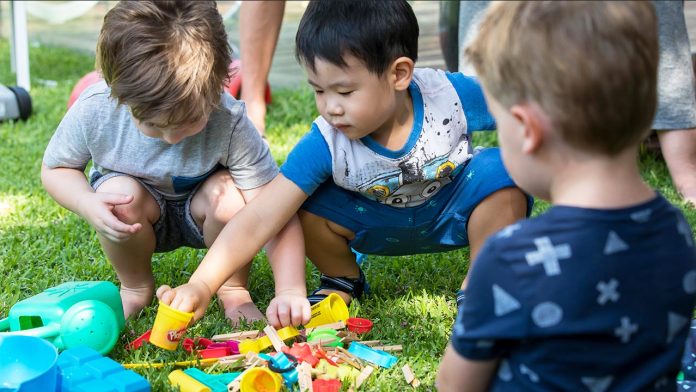As far as parenting tomes go, The Wonder Weeks is up there. Upon its release in 1992, it became a bestseller and is currently translated into 20 languages. And now the recently released, fully updated edition of the bestseller, The Wonder Weeks: A Stress-Free Guide to Your Baby’s Behavior, offers the latest in comprehensive information on infants’ mental development—as well as the signaturely positive perspective on the tough stuff. At its core, it’s based on the decades of research conducted by the original authors, the late anthropologist Hetty van de Rijt, Ph.D., and behavioral biologist Frans Plooij, Ph.D. But you’ll also see some new elements, which are refreshed by their daughter, Xaviera Plas-Plooij—now CEO and herself a mother of three—for the modern parent (for example, it includes an app for tech-friendly families, in-book games, and checklists). Here, an exclusive Q&A.
What does the term “wonder weeks” refer to, and when do these weeks happen?
The wonder weeks refer to a period after what we call the Three C’s (crying, cranky, and clingy behavior): There will then be a week in which parents will see all kinds of new skills emerging in their baby. This pattern appears again and again and again—the wonder weeks! This will take place up until about 20 months.
What does the term “leap” mean? How many leaps are there, and what are some examples?
Like physical growth, mental growth does not unfold smoothly and gradually; instead, there are steady periods followed by a sudden increase. It is as if your baby literally leaps to another level of development. These leaps are difficult for a baby. Taking a leap means that perception shifts; suddenly, for a while, the world looks unfamiliar to the baby. It’s like she’s on a new planet and everything is different. What would you do in this situation? You might cry, be cranky, and cling onto the only people you recognize, right? That is why a leap always starts with the fussy phase. Luckily, we know when these leaps are likely to occur and how you can help your baby through them. For example, consider the fifth leap, which happens around six months. Your baby now understands “relationships” for the first time—for example, the spatial relationship between two objects. This is why, after taking this leap, a baby starts to really cry more whenever you leave the room or when he doesn’t see you anymore. He now understands that you can move and that the space between you two gets bigger and that there is nothing he can do to stop you, except to let you hear that he really wants you to close the gap.
Isn’t every baby unique? How can you predict the timing of a baby’s fussy periods and leaps?
Yes, every baby is unique, and yet these leaps tend to occur within a strikingly similar time frame. The way a baby deals with a leap, and what they get out of a leap, is what makes every baby unique. Compare it to puberty: Every child goes through it at roughly the same age, but the way they go through it, how they do it, and what they get out of it makes every adolescent unique.
What should parents keep in mind when the demands upon them seem exhausting and overwhelming?
Leaps are challenging for a baby, and so they are also challenging for parents. You want to help your baby in all ways possible, and seeing a baby in tears makes your heart cry. But knowing about what is going on in your baby’s mind can reassure you and give you a new, positive perspective on a difficult phase; it gives you comfort.
Parenting practices differ from country to country and generation to generation. How can you apply it to parents now?
Mental development is universal; it’s not about culture. All babies take the same leaps. We do not—and never will—tell parents how they should practice parenting. Instead, we offer insights so parents around the globe can make their own choices, because every parent can embrace stress-free parenting!






























